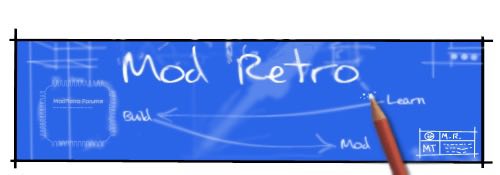So, I just got a Kindle and want to automate the downloading of news feeds to it. I wanted a PC to turn on when I woke up in the morning, download the feeds, transfer them to my Kindle, then shut off.
First problem: The spare PC I put together for this does not support automatic startup in the BIOS, and neither do any of the other motherboards I had. So, I thought of a way to use an alarm clock to turn it on.
When the alarm clock would go off, it had a speaker that would produce a tone. This means it was switching power to the speaker on and off very quickly. This would not drive a relay directly, so I made a "filtering" circuit consisting of a few transistors and a capacitor. When the clock goes off, it charges the capacitor through a transistor. This buffers the on's and off's into a kind of pulsating DC current.
The capacitor drains into another transistor, turning it on. This activates two relays at once. One presses the button to turn off the alarm, and the other turns on the computer. Since the alarm was turned off just a moment ago, the speaker does not sound again and it does not turn the computer back off.
In the first picture, you see two sets of black and white wires going into the PC. One comes from the relay to short the power switch momentarily, and the other goes to the +5VSB on the power supply. This line provides +5v at low currents, even when the computer is off. The 5v powers the buffering circuit.
That was the difficult part and took about 4 hours. Everything else was easy. When you get a Kindle, Amazon gives you a free email address you can use to send files to it. I installed Calibre (an awesome free e-book manager) on the PC and had it run on startup. I set it up to download the feeds then email them to the Kindle through WiFi.
Turning the computer back off was easy as well. All you need to do it make a shortcut to "shutdown.exe -f -s -t x" and add it to the startup folder. The .exe is the Windows shutdown program. -f force-closes any open programs, -s specifies a shutdown (instead of restart, logout, etc) and -t x is how much time it will wait before shutting down, in seconds. I set it to a half-hour.
So, now I can have my news feeds on my Kindle before I leave for school.












